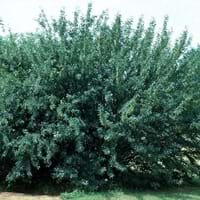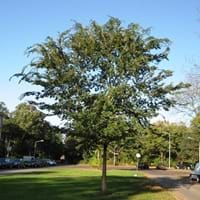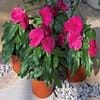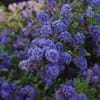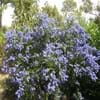Life Span
Perennial
Perennial
Origin
Russia/Siberia, China
Eastern Asia
Types
Dwarf Siberian Peashrub, Sutherland Peashrub, Weeping Siberian Peashrub
Ulmus chumlia, Ulmus glabra, Ulmus elongata
Habitat
Forest edges, gully slopes, Open Forest, Riverbanks, Sandy areas
River side
USDA Hardiness Zone
2-8
5-9
Sunset Zone
A1, A2, A3, 1a, 1b, 2a, 2b, 3a, 3b, 4, 5, 6, 7, 8, 9, 10, 12
3a, 3b, 4, 5, 6, 7, 8, 9, 10, 11, 12, 13, 14, 15, 16, 17, 18, 19, 20, 21, 22, 23, 24
Habit
Narrow Upright/Fastigiate
Upright/Erect
Flower Color Modifier
Not Available
Bicolor
Fruit Color
Brown
Tan, Brown
Leaf Color in Spring
Light Green
Green
Leaf Color in Summer
Light Green
Dark Green
Leaf Color in Fall
Light Green, Light Yellow
Yellow, Red, Green
Leaf Color in Winter
Not Available
Not Available
Leaf Shape
Pinnate
Toothed
Plant Season
Spring
Spring, Summer, Fall, Winter
Sunlight
Full Sun
Full Sun, Partial Sun
Growth Rate
Fast
Not Available
Type of Soil
Clay, Loam
Loam, Sand
The pH of Soil
Acidic, Neutral, Alkaline
Acidic, Neutral, Alkaline
Soil Drainage
Well drained
Well drained
Tolerances
Drought, Salt
Drought
Where to Plant?
Ground
Ground
How to Plant?
Cuttings, Layering, Seedlings
Seedlings, Stem Planting, Transplanting
Plant Maintenance
Low
Medium
Watering Requirements
Keep the ground moist but not water-logged, occasional watering once established
Average Water Needs, Requires watering in the growing season, Water when top layer of soil becomes dry
In Summer
Moderate
Lots of watering
In Spring
Ample Water
Moderate
In Winter
Average Water
Average Water
Soil pH
Acidic, Neutral, Alkaline
Acidic, Neutral, Alkaline
Soil Type
Clay, Loam
Loam, Sand
Soil Drainage Capacity
Well drained
Well drained
Sun Exposure
Full Sun
Full Sun, Partial Sun
Pruning
Remove dead branches, Remove dead or diseased plant parts
Prune if you want to improve plant shape, Remove damaged leaves, Remove dead leaves, Remove shoots
Fertilizers
fertilize in spring
organic fertlizers
Pests and Diseases
blister beetles, Septoria leaf spot, stem decay
Mealybugs, Red blotch, Scale
Plant Tolerance
Drought, Salt
Drought
Flowers
Yes
Insignificant
Flower Petal Number
Single
Single
Foliage Texture
Fine
Fine
Foliage Sheen
Matte
Glossy
Attracts
Bees, Hummingbirds
Not Available
Allergy
Diarrhea, Vomiting
allergic reaction
Aesthetic Uses
Not Used For Aesthetic Purpose
Bonsai, Landscape Designing
Beauty Benefits
used as a dye
Not Available
Environmental Uses
Erosion control, Fixes Nitrogen, Food for animals, Shelter for wildlife, Windbreak
Air purification, Food for birds, Food for insects, No fertilizer, pesticides, or herbicides needed, Prevent Soil Erosion
Medicinal Uses
Cancer, Dysmenorrhea, Gynaecological
Antidote, Demulcent, Diuretic
Part of Plant Used
Leaves, Seeds
Fruits, Inner Bark, Leaves
Other Uses
Fibre, For making oil, Shelterbelt, Used as a dye, Used for making informal hedge
Used as firewood, Used for its medicinal properties, Used in construction, Used in Furniture, Wood is used for making furniture, Wood is used for ship building, Wood is used in construction
Used As Indoor Plant
No
Yes
Used As Outdoor Plant
Yes
Yes
Garden Design
Hedges, Mixed Border, Screening, Wind Break
Container, Feature Plant, Mixed Border, Shade Trees, Street Trees, Topiary / Bonsai / Espalier
Botanical Name
CARAGANA arborescens
ULMUS parvifolia 'Drake'
Common Name
Siberian peashrub, Siberian pea-tree, caragana
Chinese Elm, Drake Elm
In Hindi
Siberian peashrub
चीनी एल्म
In German
Gemeiner Erbsenstrauch
Chinese Elm
In French
Caraganier de Sibérie
Elm chinoise
In Spanish
Siberian Peashrub
olmo chino
In Greek
Siberian Peashrub
Κινέζοι Elm
In Portuguese
Siberian peashrub
Elm chinês
In Polish
Karagana syberyjska
Chiński Elm
In Latin
Siberian Peashrub
Chinese Elm
Phylum
Magnoliophyta
Magnoliophyta
Class
Magnoliopsida
Magnoliopsida
Clade
Angiosperms, Eudicots, Rosids
Angiosperms, Asterids, Eudicots
Tribe
Not Available
Ulmeae
Subfamily
Not Available
Not Available
Number of Species
Not Available
Not Available
Season and Care of Siberian Peashrub and Chinese Elm
Season and care of Siberian Peashrub and Chinese Elm is important to know. While considering everything about Siberian Peashrub and Chinese Elm Care, growing season is an essential factor. Siberian Peashrub season is Spring and Chinese Elm season is Spring. The type of soil for Siberian Peashrub is Clay, Loam and for Chinese Elm is Loam, Sand while the PH of soil for Siberian Peashrub is Acidic, Neutral, Alkaline and for Chinese Elm is Acidic, Neutral, Alkaline.
Siberian Peashrub and Chinese Elm Physical Information
Siberian Peashrub and Chinese Elm physical information is very important for comparison. Siberian Peashrub height is 460.00 cm and width 300.00 cm whereas Chinese Elm height is 1,520.00 cm and width 1,220.00 cm. The color specification of Siberian Peashrub and Chinese Elm are as follows:
Siberian Peashrub flower color: Yellow
Siberian Peashrub leaf color: Light Green
Chinese Elm flower color: Red
- Chinese Elm leaf color: Green
Care of Siberian Peashrub and Chinese Elm
Care of Siberian Peashrub and Chinese Elm include pruning, fertilizers, watering etc. Siberian Peashrub pruning is done Remove dead branches and Remove dead or diseased plant parts and Chinese Elm pruning is done Prune if you want to improve plant shape, Remove damaged leaves, Remove dead leaves and Remove shoots. In summer Siberian Peashrub needs Moderate and in winter, it needs Average Water. Whereas, in summer Chinese Elm needs Lots of watering and in winter, it needs Average Water.
